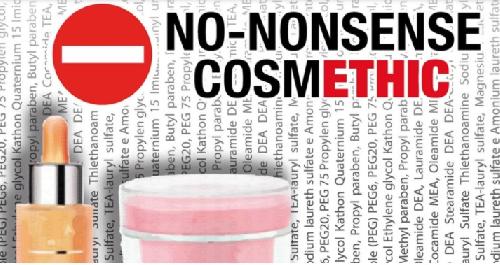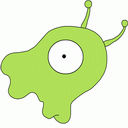TRICLOSAN
Moderatori: gigetta, Laura, tagliar, MissBarbara
Regole del forum
in questa sezione NON SI POSTANO INCI
in questa sezione NON SI POSTANO INCI
-
Asfodelo
- utente

- Messaggi: 48
- Iscritto il: 19/12/2007, 10:23
-
paracelso

- esimio cosmetologo

- Messaggi: 688
- Iscritto il: 13/12/2006, 8:58
Sempre peggio...
Latest research into the antibacterial ingredient Triclosan brings about fresh evidence that it can have a significant impact on thyroid function and the onset of puberty in male rats.
Researchers at the University of North Carolina State University say that a study they conducted on rats showed a dramatic decrease in the thyroid hormone thyroxine following exposure to increasing concentrations of triclosan.
The study used newly weaned rats that were fed quantities of triclosan in doses of 0, 3, 30, 100, 200 or 300mg/kg of body weight over a 31 day period.
Effect of triclosan on the thyroid:
The purpose of the experiment was to determine what effect triclosan has on thyroid hormone levels as a means of gauging how this might impact the onset of puberty.
The researchers found that at doses of up to 3mg there was no detectable difference in thyroid activity. However, at 30mg thyroxine levels decreased by 47 per cent and at 300mg activity decreased by 81 per cent.
Likewise, the study also points out that at the 300mg doseage level, the colloid area of the thyroid gland was smaller than in all the other test groups.
Thyroxine crucial to development:
As thyroxine is a crucial chemical in the development of puberty and a functioning metabolism in males, the researchers suggest that the impact of triclosan may consequently lead to a variety of health-related issues both before and after birth.
One of the key health-related issues the researchers are concerned about is hypothyroidism, which causes the thyroid to produce lower than normal levels of hormones.
This can lead to a variety of serious conditions such as obesity, infertility and even neurological problems - condition that are related to the all-important influence the thyroxine has on the metabolism.
Adds to growing scientific evidence
The research findings reaffirm a growing body of scientific evidence underlining the potential toxicity of triclosan, a danger that is exacerbated by the fact that it is used in a wide number of personal care products, including toothpaste, soap and deodorant.
Although regulatory authorities all over the world dictate that formulators use doses of Triclosan at levels deemed not to pose a risk to human health, some industry experts believe that concurrent use of multiple personal care products might lead to a cumulative exposure that could pose a greater danger.
Back in September, the International NGO ChemSec released a list of chemical substances, that included triclosan, for which it feels companies should be searching for alternatives.
267 chemicals under scrutiny
The Substitute it Now (SIN) list was presented by ChemSec (the International Chemicals Secretariat) in Brussels and includes 267 chemicals that the group feels are of high concern.
As part of the REACH legislation, the European Chemicals Agency ECHA is due to release a similar list of Substances of Very High Concern, in October, however this list may contain as few as 12 substances.
The list of 267 chemicals, which can be viewed via ChemSec’s website, was compiled in collaboration with nine consumer and environmental NGOs and a number of businesses.
Latest research into the antibacterial ingredient Triclosan brings about fresh evidence that it can have a significant impact on thyroid function and the onset of puberty in male rats.
Researchers at the University of North Carolina State University say that a study they conducted on rats showed a dramatic decrease in the thyroid hormone thyroxine following exposure to increasing concentrations of triclosan.
The study used newly weaned rats that were fed quantities of triclosan in doses of 0, 3, 30, 100, 200 or 300mg/kg of body weight over a 31 day period.
Effect of triclosan on the thyroid:
The purpose of the experiment was to determine what effect triclosan has on thyroid hormone levels as a means of gauging how this might impact the onset of puberty.
The researchers found that at doses of up to 3mg there was no detectable difference in thyroid activity. However, at 30mg thyroxine levels decreased by 47 per cent and at 300mg activity decreased by 81 per cent.
Likewise, the study also points out that at the 300mg doseage level, the colloid area of the thyroid gland was smaller than in all the other test groups.
Thyroxine crucial to development:
As thyroxine is a crucial chemical in the development of puberty and a functioning metabolism in males, the researchers suggest that the impact of triclosan may consequently lead to a variety of health-related issues both before and after birth.
One of the key health-related issues the researchers are concerned about is hypothyroidism, which causes the thyroid to produce lower than normal levels of hormones.
This can lead to a variety of serious conditions such as obesity, infertility and even neurological problems - condition that are related to the all-important influence the thyroxine has on the metabolism.
Adds to growing scientific evidence
The research findings reaffirm a growing body of scientific evidence underlining the potential toxicity of triclosan, a danger that is exacerbated by the fact that it is used in a wide number of personal care products, including toothpaste, soap and deodorant.
Although regulatory authorities all over the world dictate that formulators use doses of Triclosan at levels deemed not to pose a risk to human health, some industry experts believe that concurrent use of multiple personal care products might lead to a cumulative exposure that could pose a greater danger.
Back in September, the International NGO ChemSec released a list of chemical substances, that included triclosan, for which it feels companies should be searching for alternatives.
267 chemicals under scrutiny
The Substitute it Now (SIN) list was presented by ChemSec (the International Chemicals Secretariat) in Brussels and includes 267 chemicals that the group feels are of high concern.
As part of the REACH legislation, the European Chemicals Agency ECHA is due to release a similar list of Substances of Very High Concern, in October, however this list may contain as few as 12 substances.
The list of 267 chemicals, which can be viewed via ChemSec’s website, was compiled in collaboration with nine consumer and environmental NGOs and a number of businesses.
Paracelso -
stufo di bufale cosmetiche - http://www.nononsensecosmethic.org
stufo di bufale cosmetiche - http://www.nononsensecosmethic.org
-
Lola

- Grande Capa

- Messaggi: 48736
- Iscritto il: 28/09/2006, 10:47
- Località: Monfalcone
Lo sapevo che mi stava antipatico per qualche motivo! 
Certo che non ce lo mangiamo come i poveri ratti, anche se è ben penetrante; se non è necessario lo ritengo in ogni caso una ostanza da evitarsi.
Certo che non ce lo mangiamo come i poveri ratti, anche se è ben penetrante; se non è necessario lo ritengo in ogni caso una ostanza da evitarsi.
...perchè io VI VEDO
"Dovrei mettere all'ingresso del forum avete presente quei metal detector tipo negli aeroporti? Quando suona, faccio lasciare giù la scatoletta di bicarbonato e faccio passare solo senza."
"Dovrei mettere all'ingresso del forum avete presente quei metal detector tipo negli aeroporti? Quando suona, faccio lasciare giù la scatoletta di bicarbonato e faccio passare solo senza."
-
enrica79
- utente avanzato

- Messaggi: 55
- Iscritto il: 19/07/2010, 15:22
- Località: Veneto
Ciao a tutti,
mi attacco qua per una domanda, sicuramente sciocca ma non capisco una cosa.
Premessa:
Da oltre 30 anni i miei usano il dentifricio Pasta del Capitano.
Nel tipo dotato di Triclosan.
Ebbene ora che leggo il sito di Lola sono rimasta sconvolta e ho cambiato tipo (ossia senza Triclosan).
Mia madre si rifiuta di cambiare dentifricio perchè ama quel sapore là e non c'è verso.
Il mio dubbio è questo:
ma case produttrici serie, almeno così credo e spero, come la Ciccarelli o la Manetti&Roberts, come fanno a mettere in giro prodotti che contengono un elemento poco salutare e che addirittura viene vietato nei paesi scandinavi?
Dico io, magari sarò stupida, ma non possono vietare la vendita?
Ok, vendono le sigarette che fanno venire il tumore, ma che senso ha mettere il triclosan se gli studi parlano male di tale sostanza?
Sarò io cretina ma non capisco.
E' solo questione di business allora?
mi attacco qua per una domanda, sicuramente sciocca ma non capisco una cosa.
Premessa:
Da oltre 30 anni i miei usano il dentifricio Pasta del Capitano.
Nel tipo dotato di Triclosan.
Ebbene ora che leggo il sito di Lola sono rimasta sconvolta e ho cambiato tipo (ossia senza Triclosan).
Mia madre si rifiuta di cambiare dentifricio perchè ama quel sapore là e non c'è verso.
Il mio dubbio è questo:
ma case produttrici serie, almeno così credo e spero, come la Ciccarelli o la Manetti&Roberts, come fanno a mettere in giro prodotti che contengono un elemento poco salutare e che addirittura viene vietato nei paesi scandinavi?
Dico io, magari sarò stupida, ma non possono vietare la vendita?
Ok, vendono le sigarette che fanno venire il tumore, ma che senso ha mettere il triclosan se gli studi parlano male di tale sostanza?
Sarò io cretina ma non capisco.
E' solo questione di business allora?
Enry79
-
Lilli

- utente avanzato

- Messaggi: 677
- Iscritto il: 05/10/2006, 17:39
- Località: sulle dolci colline tra Pesaro e Urbino...
Perchè se un ingrediente è ammesso, se pur con restrizioni d'uso, si può comunque usare 
Di ingredienti che non sono proprio una passeggiata di salute ce ne sono diversi... a cominciare dal famigerato paraffinum liquidum che (in base alle impurezze che contiene) può essere classificato come sostanza CMR (cancerogeno, mutageno, interferisce con la riproduzione) ma col quale si continua allegramente a spalmare milioni di bebè
Ogni tanto qualche ingrediente finisce in blacklist, vedi il caso del methyldibromo glutaronitrile, ma non è sempre così.
L'unica è tenere gli occhi aperti e (visto che da qualche anno è possibile) leggere sempre l'etichetta con gli ingredienti.
Di ingredienti che non sono proprio una passeggiata di salute ce ne sono diversi... a cominciare dal famigerato paraffinum liquidum che (in base alle impurezze che contiene) può essere classificato come sostanza CMR (cancerogeno, mutageno, interferisce con la riproduzione) ma col quale si continua allegramente a spalmare milioni di bebè
Ogni tanto qualche ingrediente finisce in blacklist, vedi il caso del methyldibromo glutaronitrile, ma non è sempre così.
L'unica è tenere gli occhi aperti e (visto che da qualche anno è possibile) leggere sempre l'etichetta con gli ingredienti.
"Quando l'ultimo albero sarà abbattuto,
quando l'ultimo fiume sarà avvelenato,
quando l'ultimo pesce sarà catturato,
allora vi accorgerete che i soldi non si possono mangiare"
(monito degli indiani Cree del Quebec)
quando l'ultimo fiume sarà avvelenato,
quando l'ultimo pesce sarà catturato,
allora vi accorgerete che i soldi non si possono mangiare"
(monito degli indiani Cree del Quebec)
-
anto

- Spignattatore Esperto

- Messaggi: 5171
- Iscritto il: 03/10/2006, 9:54
La FDA americana è appena stata citata in giudizio proprio per non essere intervenuta a proposito del Triclosan ... ne vedremo delle belle
http://www.foxnews.com/story/0,2933,598108,00.html
PS.. dalla stessa fonte:
"recent bio-monitoring results found "residues of triclosan in 75 percent of Americans over the age of 6." ...
http://www.foxnews.com/story/0,2933,598108,00.html
PS.. dalla stessa fonte:
"recent bio-monitoring results found "residues of triclosan in 75 percent of Americans over the age of 6." ...
-
Laura

- moderatrice globale

- Messaggi: 12020
- Iscritto il: 07/10/2006, 16:39
Re: TRICLOSAN
Ho letto di uno studio del 2009 che ha riscontrato che nella donna gravida il triclosan eventualmente accumulato nell'organismo ostacola il passaggio del sangue all'utero, essendo un inibitore degli ormoni della gravidanza.
Ne ho trovato la bibliografia e l'abstract:
Triclosan is a potent inhibitor of estradiol and estrone sulfonation in sheep placenta
Margaret O James, Wenjun Li, David P Summerlot, Laura Rowland-Faux, Charles E Wood
Department of Medicinal Chemistry, College of Pharmacy, University of Florida, Gainesville, FL 32610-0485, USA.
Abstract
The personal care product Triclosan, 5-chloro-2(2,4-dichlorophenoxy)-phenol, is widely used in consumer products as an antibacterial agent and is increasingly found in the environment as a contaminant of sewage sludge and wastewater. This compound has been identified in plasma and urine of people in the United States, Sweden and Australia. Triclosan is known to inhibit sulfonation of phenolic xenobiotics and is structurally related to inhibitors of estrogen sulfotransferase, such as polychlorobiphenylols. In pregnancy, the placenta is an important source of estrogen, which is needed for normal fetal development and successful parturition, and estrogen sulfotransferase is thought to play an important role in regulation of estrogen availability. In this study, we examined the effect of Triclosan on sheep placental cytosolic sulfotransferase activity with 17-beta-estradiol and estrone as substrates. For comparison, we studied the effects of 4-hydroxy-3,3',4',5-tetrachlorobiphenyl and 2'-hydroxytriclocarban on estradiol sulfonation. The apparent K(m) for placental cytosolic sulfotransferase activity with estradiol as substrate was 0.27+/-0.06 nM (mean+/-S.D., n=3 individuals) and with estrone as substrate was 1.86+/-0.22 nM. Partial substrate inhibition was observed with estradiol at concentrations higher than 10-20 nM, as is typical of estrogen sulfotransferases (SULT1E1) in other species. Studies of the effect of Triclosan on estrogen sulfotransferase activity were conducted with several concentrations (0.1-6 nM) of estradiol and with 2 nM estrone. Triclosan was a very potent inhibitor of both estradiol and estrone sulfonation. For estradiol the inhibition was shown to be mixed competitive/uncompetitive, with K(ic) of 0.09+/-0.01 nM and K(iu) of 5.2+/-2.9 nM. The IC(50) for inhibition of estrone sulfonation was 0.60+/-0.06 nM. At an environmentally relevant concentration of 1 microM, Triclosan was not a substrate for glucuronidation in sheep placental microsomes. Triclosan could be sulfonated in placental cytosol with K(m) 1.14+/-0.18 microM and V(max) 160+/-26 pmol/min/mg protein, however the calculated rates of Triclosan sulfonation were negligible at the low nM concentrations that potently inhibit estrogen sulfonation. The high potency of Triclosan as an inhibitor of estrogen sulfotransferase activity raises concern about its possible effects on the ability of the placenta to supply estrogen to the fetus, and in turn on fetal growth and development.
Ne ho trovato la bibliografia e l'abstract:
Triclosan is a potent inhibitor of estradiol and estrone sulfonation in sheep placenta
Margaret O James, Wenjun Li, David P Summerlot, Laura Rowland-Faux, Charles E Wood
Department of Medicinal Chemistry, College of Pharmacy, University of Florida, Gainesville, FL 32610-0485, USA.
Abstract
The personal care product Triclosan, 5-chloro-2(2,4-dichlorophenoxy)-phenol, is widely used in consumer products as an antibacterial agent and is increasingly found in the environment as a contaminant of sewage sludge and wastewater. This compound has been identified in plasma and urine of people in the United States, Sweden and Australia. Triclosan is known to inhibit sulfonation of phenolic xenobiotics and is structurally related to inhibitors of estrogen sulfotransferase, such as polychlorobiphenylols. In pregnancy, the placenta is an important source of estrogen, which is needed for normal fetal development and successful parturition, and estrogen sulfotransferase is thought to play an important role in regulation of estrogen availability. In this study, we examined the effect of Triclosan on sheep placental cytosolic sulfotransferase activity with 17-beta-estradiol and estrone as substrates. For comparison, we studied the effects of 4-hydroxy-3,3',4',5-tetrachlorobiphenyl and 2'-hydroxytriclocarban on estradiol sulfonation. The apparent K(m) for placental cytosolic sulfotransferase activity with estradiol as substrate was 0.27+/-0.06 nM (mean+/-S.D., n=3 individuals) and with estrone as substrate was 1.86+/-0.22 nM. Partial substrate inhibition was observed with estradiol at concentrations higher than 10-20 nM, as is typical of estrogen sulfotransferases (SULT1E1) in other species. Studies of the effect of Triclosan on estrogen sulfotransferase activity were conducted with several concentrations (0.1-6 nM) of estradiol and with 2 nM estrone. Triclosan was a very potent inhibitor of both estradiol and estrone sulfonation. For estradiol the inhibition was shown to be mixed competitive/uncompetitive, with K(ic) of 0.09+/-0.01 nM and K(iu) of 5.2+/-2.9 nM. The IC(50) for inhibition of estrone sulfonation was 0.60+/-0.06 nM. At an environmentally relevant concentration of 1 microM, Triclosan was not a substrate for glucuronidation in sheep placental microsomes. Triclosan could be sulfonated in placental cytosol with K(m) 1.14+/-0.18 microM and V(max) 160+/-26 pmol/min/mg protein, however the calculated rates of Triclosan sulfonation were negligible at the low nM concentrations that potently inhibit estrogen sulfonation. The high potency of Triclosan as an inhibitor of estrogen sulfotransferase activity raises concern about its possible effects on the ability of the placenta to supply estrogen to the fetus, and in turn on fetal growth and development.
-
lunabianca

- utente avanzato

- Messaggi: 284
- Iscritto il: 23/05/2007, 18:44
Re: TRICLOSAN
Dal sito Chilly.it:
Chilly Neutro Tripla protezione
Il nuovo Chilly Neutro offre una tripla protezione perchè:
3 volte testato
per LEI in Clinica Ginecologica
per LUI in Clinica Dermatologica
per i BAMBINI in Clinica Pediatrica
3 volte specifico grazie ai suoi ingredienti
l’Acido Lattico, particolarmente importante per LEI in quanto favorisce l’equilibrio del PH fisiologico e aiuta le parti intime a ripristinare il naturale pH, rinforzando così la naturale barriera protettiva
il Triclosan, indicato specialmente per LUI perché svolge un’efficace azione antibatterica che aiuta a contrastare lo sviluppo dei batteri responsabili dei cattivi odori
il Bisabololo, contenuto nell’estratto di camomilla, ideale per i BAMBINI in quanto svolge un’azione lenitiva e addolcente anche per le pelli più delicate
Chilly Neutro è approvato dall’Associazione Ginecologi A.Gi.Co.
Ideale anche come detergente corpo

Chilly Neutro Tripla protezione
Il nuovo Chilly Neutro offre una tripla protezione perchè:
3 volte testato
per LEI in Clinica Ginecologica
per LUI in Clinica Dermatologica
per i BAMBINI in Clinica Pediatrica
3 volte specifico grazie ai suoi ingredienti
l’Acido Lattico, particolarmente importante per LEI in quanto favorisce l’equilibrio del PH fisiologico e aiuta le parti intime a ripristinare il naturale pH, rinforzando così la naturale barriera protettiva
il Triclosan, indicato specialmente per LUI perché svolge un’efficace azione antibatterica che aiuta a contrastare lo sviluppo dei batteri responsabili dei cattivi odori
il Bisabololo, contenuto nell’estratto di camomilla, ideale per i BAMBINI in quanto svolge un’azione lenitiva e addolcente anche per le pelli più delicate
Chilly Neutro è approvato dall’Associazione Ginecologi A.Gi.Co.
Ideale anche come detergente corpo
-
Lola

- Grande Capa

- Messaggi: 48736
- Iscritto il: 28/09/2006, 10:47
- Località: Monfalcone
Re: TRICLOSAN
Dico, e se LUI si lavasse più spesso magari non avrebbe bisogno del triclosan 
...perchè io VI VEDO
"Dovrei mettere all'ingresso del forum avete presente quei metal detector tipo negli aeroporti? Quando suona, faccio lasciare giù la scatoletta di bicarbonato e faccio passare solo senza."
"Dovrei mettere all'ingresso del forum avete presente quei metal detector tipo negli aeroporti? Quando suona, faccio lasciare giù la scatoletta di bicarbonato e faccio passare solo senza."
-
Tabatha
- utente avanzato

- Messaggi: 719
- Iscritto il: 12/07/2009, 18:51
- Località: Viale dei Ciliegi n° 17
Re: TRICLOSAN
Il triclosan può creare reazione allergica?
mi spiego: non posso usare deodoranti che contengono alluminio perché mi irritano le ascelle in modo pauroso...da un mesetto circa sto usando un deo che all'ultimo posto contiene il triclosan (un inci brevissimo, tra l'altro, per cui mi fa comunque supporre che tale ingrediente sia stato inserito nella quantità minima concessa ) e ho notato una reazione molto simile a quella che mi accadeva con i deodoranti con l'alluminio, è lui il responsabile, vero?
) e ho notato una reazione molto simile a quella che mi accadeva con i deodoranti con l'alluminio, è lui il responsabile, vero?
mi spiego: non posso usare deodoranti che contengono alluminio perché mi irritano le ascelle in modo pauroso...da un mesetto circa sto usando un deo che all'ultimo posto contiene il triclosan (un inci brevissimo, tra l'altro, per cui mi fa comunque supporre che tale ingrediente sia stato inserito nella quantità minima concessa
-
anto

- Spignattatore Esperto

- Messaggi: 5171
- Iscritto il: 03/10/2006, 9:54
Re: TRICLOSAN
Può essere ma il Triclosan è da evitare 'a priori'
-
Tabatha
- utente avanzato

- Messaggi: 719
- Iscritto il: 12/07/2009, 18:51
- Località: Viale dei Ciliegi n° 17
Re: TRICLOSAN
certo, certo ma ero senza deo e il discaunt offriva solo quello 
-
anto

- Spignattatore Esperto

- Messaggi: 5171
- Iscritto il: 03/10/2006, 9:54
Re: TRICLOSAN
L'ultima postata da Zago è questa
Triclosan In Antibacterial Soaps May Cause Cellular Damage.
The Los Angeles Examiner (8/15, Wulffson) reports, "Triclosan, which was introduced in the 1970s, has become an increasingly popular ingredient in many antibacterial soaps and personal-care products." But, a "new study has reported that the substance can damage both skeletal and heart muscle cells. Researchers affiliated with the University of California, Davis, the University of Colorado, and the Department of Veterans Affairs, Northern California Health Care System published their findings online ahead of print on August 13 in the Proceedings of the National Academy of Sciences (PNAS)."
Triclosan In Antibacterial Soaps May Cause Cellular Damage.
The Los Angeles Examiner (8/15, Wulffson) reports, "Triclosan, which was introduced in the 1970s, has become an increasingly popular ingredient in many antibacterial soaps and personal-care products." But, a "new study has reported that the substance can damage both skeletal and heart muscle cells. Researchers affiliated with the University of California, Davis, the University of Colorado, and the Department of Veterans Affairs, Northern California Health Care System published their findings online ahead of print on August 13 in the Proceedings of the National Academy of Sciences (PNAS)."


